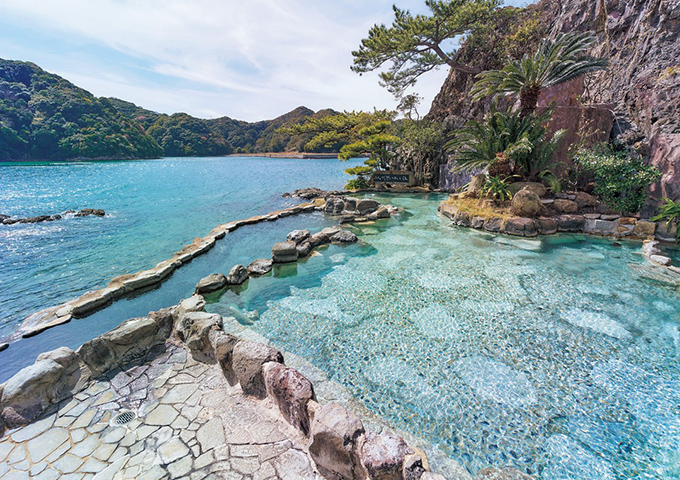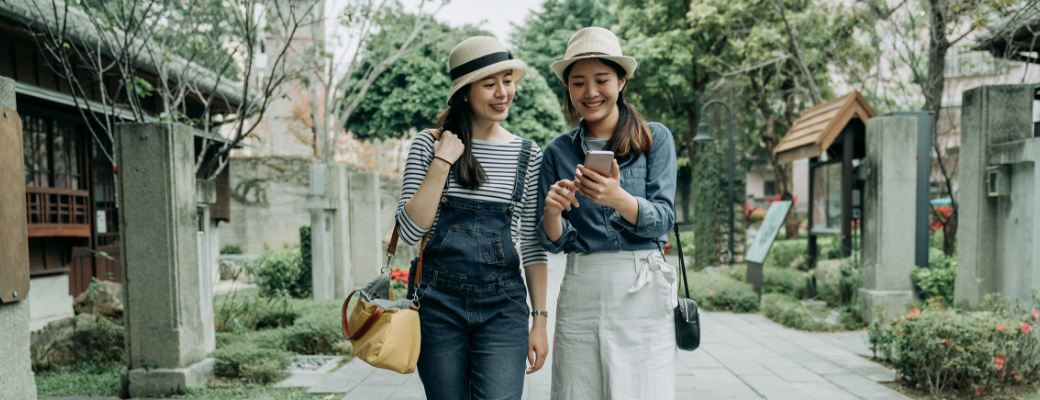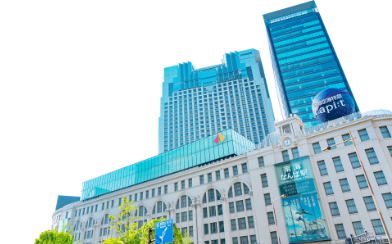
Winter Wonders
Surrounded by the beautiful nature away from the urban hustle, let's warm up in the hot springs.

What is Danjo Garan? 7 Must-See Spots
Danjo Garan, which is said to be one of the two holy sites of Koyasan along with Okunoin, is a must-visit place on Koyasan. This article introduces seven must-see spots in Danjo Garan.
It is said that when Kobo Daishi Kukai founded Koyasan, he first built the various halls in Danjo Garan. Therefore, along with Okunoin, where Kobo-Daishi entered the temple, it is considered one of the two most sacred sites on Koyasan.
The Danjo Garan, with its 19 halls, embodies the mandala worldview based on esoteric Buddhism philosophy.
From here, let's take a look at some of the best places to visit in Danjo Garan.
Central gate(Chumon)
The five-room, two-story tower gate and the central gate stand on a lower level in front of the main hall. It was destroyed by fire in 1843, but was rebuilt in 2014 to commemorate the 1200th anniversary of the founding of Koyasan. The statues of Jikkuiten (east) and Tamonten (north), which were originally enshrined in the central gate and survived the fire, were reinstalled, and the statues of Zocho-ten (south) and Hiromokuten (west) were newly built at the same time. The statues of the Four Heavenly Kings now guard the entire temple complex.
Touten no Matsu and Shakudo no Shiba
"Touten-no-matsu" is the name of a pine tree that rises on the west side of Kondo Hall. It was so named because it is said that Nyobo Shonin, a monk of Meioin Temple located to the north of the Danjo Temple, ascended from this pine tree to the Pure Land of Miroku Bosatsu (Maitreya Bodhisattva).
It is also said that when his disciple hurriedly followed Nyoho and ascended to heaven, he dropped the ladle he was holding in his hand, and because the area around the pine tree was overgrown with grass at the time, it is called Shakushino-shiba (ladle grass).
Sannoin
Sannoin was built as the worship hall of the shrine. Sannoin means a place of worship to the landowner's deity as Sanno, and the present building was rebuilt in 1594. The current building was rebuilt in 1594. It is an irimoya-zukuri building with a double-sided gabled roof, 21.3 meters long and 7.8 meters beam-to-beam.
Important events such as the Rissei Argument and the Misaisyo-ko are held in Sannoin every year.
Kujyakudo
Kujyakudo was dedicated in 1199, the first year of Shoji (1199), by Enkou, the chief priest of Toji Temple, in recognition of his achievement of the practice of praying for rain. It was destroyed by a large fire that broke out in Kondo in 1926, but was rebuilt in 1983 to commemorate the 1,150th anniversary of Kobo-Daishi's death.
The statue of the principal object, the Kujyaku Myoo by Kaikei, is designated as an Important Cultural Property and is now housed in the Reihokan.
Kondo
"Kondo" is the main hall of Koyasan as a whole. The hall was built by Kobo Daishi Kukai at the time of Koyasan's foundation, and was called Kodo in the old days. It began to play an important role as the main hall in the mid-Heian period. The present building was completed in 1932 (Showa 7) after being rebuilt seven times.
The murals inside the hall were painted by Buzan Kimura, a painter who studied under Tenshin Okakura. The main image, Akshobhya Nyorai (Akshobhya Nyorai), was built by Koun Takamura, a Buddhist priest who contributed to the modernization of wood carving.
Bell of the Great Pagoda, Koya Shiro
It is said that the bell of the Great Pagoda was finally completed during the reign of Shinnen Daitoku, after Kobo-Daishi requested that it be cast. The bell tower was repeatedly destroyed by fire, and the bell was recast three times. The present bronze bell, completed in 1547, is 2.12 meters in diameter, making it the fourth largest bell in Japan at the time, and it has since been called Koya Shiro.
The bell still echoes throughout Koyasan five times daily at 4:00 a.m., 1:00 p.m., 5:00 p.m., 9:00 p.m., and 11:00 p.m.
Jabara-michi
Jabara-michi is a path extending from the entrance to the Danjo Garan to the east side of the East Pagoda. It is said that Kobo-Daishi Kukai likened the Danjo Garan to a head and the path to the present-day Rengein to the shape of a reclining dragon, and the path was called " Jabara-michi" because it corresponds to the belly of the dragon.
When the leaves are at their best, a tunnel of autumn leaves appears to cover the path, filling the sky with a vivid spectacle that is a sight to behold.
Address: 152, Oaza Koyasan, Koyamachi, Ito-gun, Wakayama Prefecture
Access by train (train is recommended for outings!) : A short walk from "Kondou-mae" bus stop by Nankai Rinkan Bus from "Koyasan" station on the Nankai Koya Line.
Access by car: From the Katsuragi Nishi IC of the Keinawa Expressway, take Route 480 (about 50 minutes). Or, from the Kihoku Katsuragi IC of the Keinawa Expressway (approx. 40 min.)
Parking information: Naka-mon-mae parking lot (18 spaces), Kongobuji-mae parking lot (39 spaces) *All are free
In this issue, we have recommended the Danjo Garan, one of the two most sacred sites in Koyasan. It is surrounded by a mysterious atmosphere only because it was the first place that Kobo Daishi Kukai worked on. When you visit Koyasan, please take the time to enjoy the Danjo Garan.

